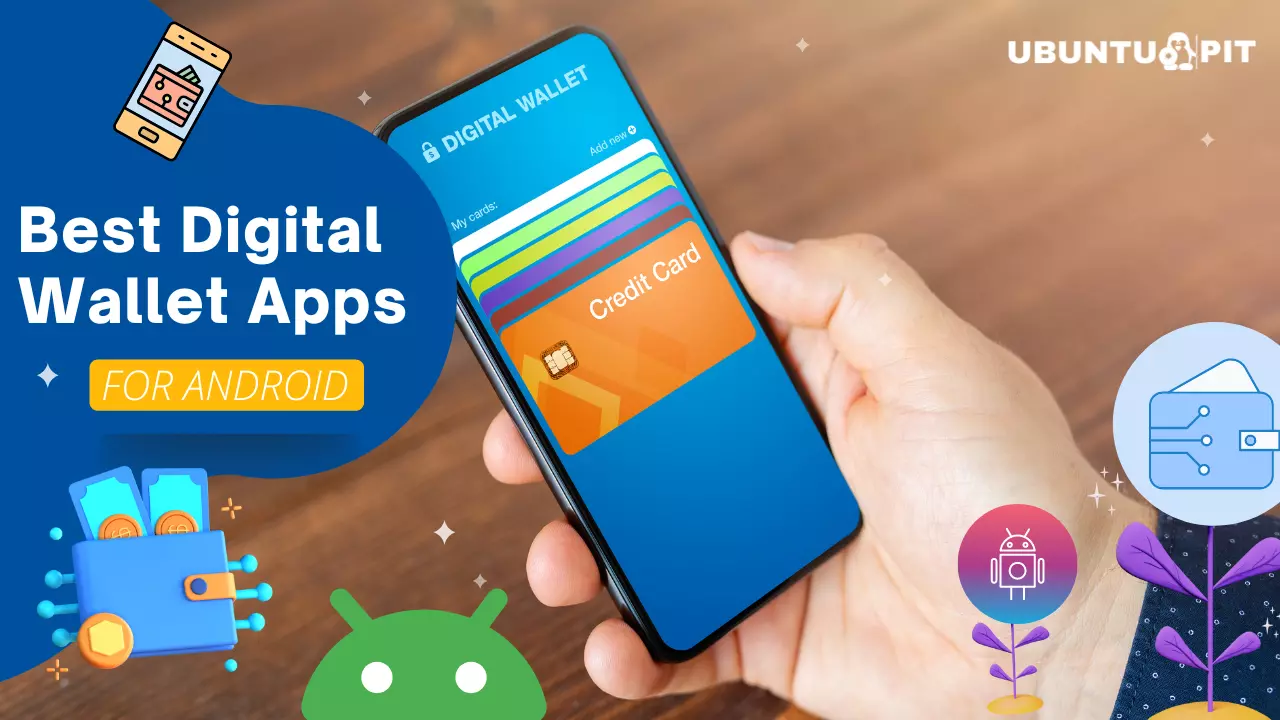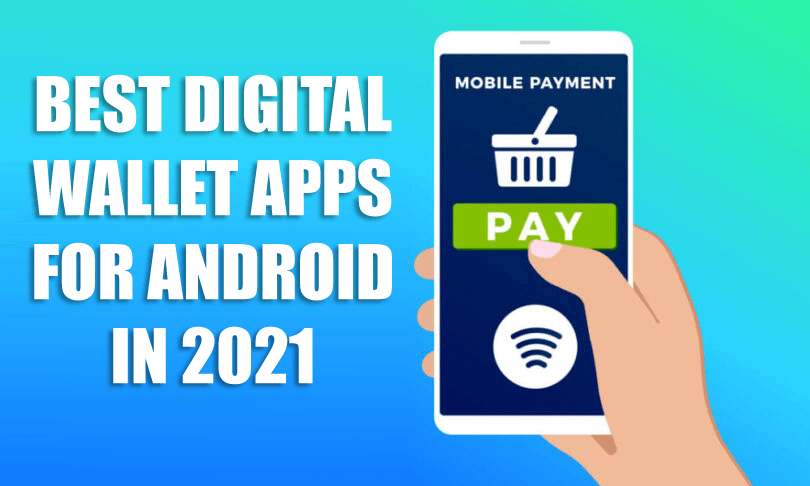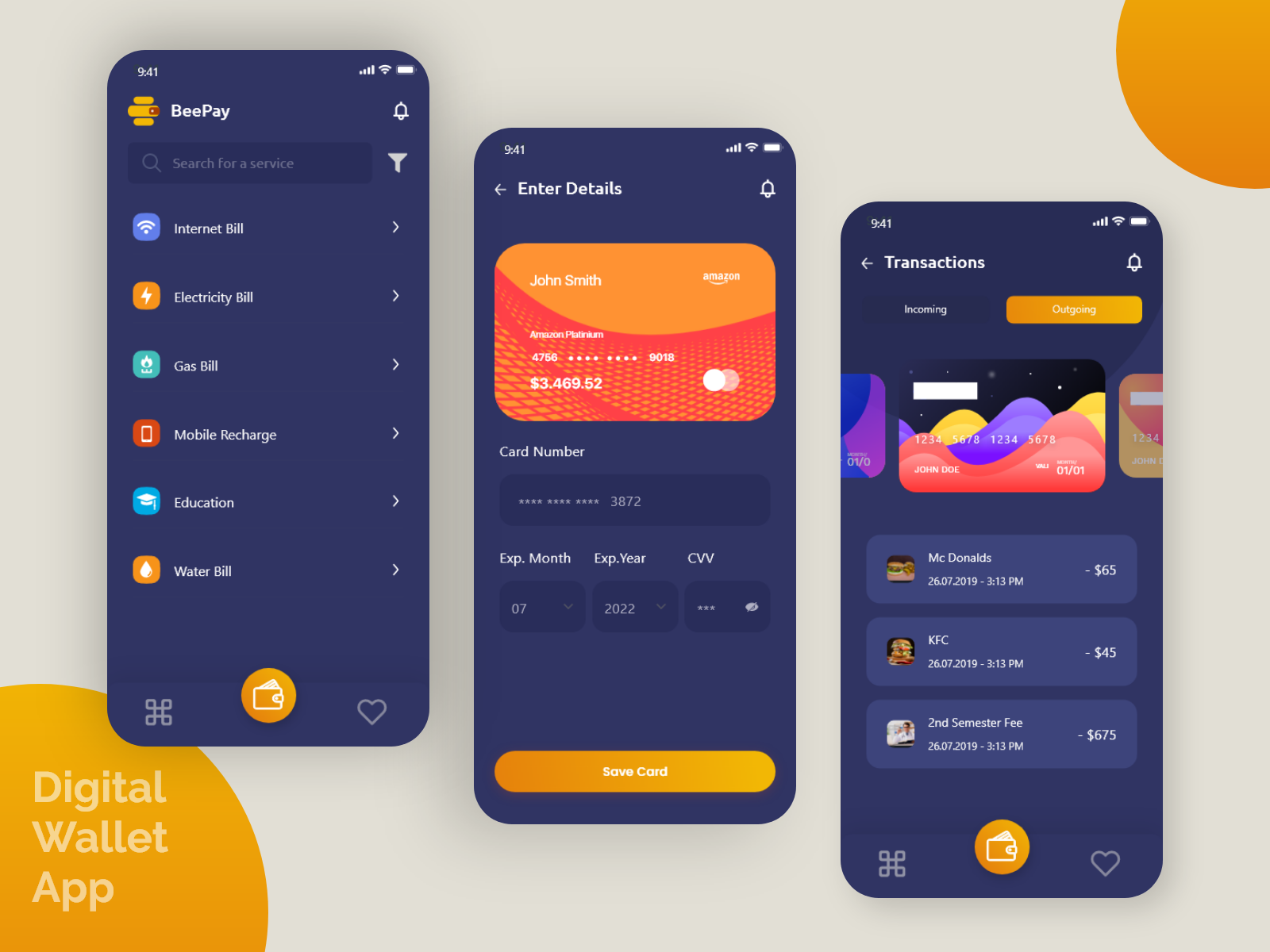Digital Wallet Apps: Revolutionizing Financial Convenience
Digital wallet apps have emerged as a transformative force in the financial landscape, offering a seamless and secure way to manage money. From mobile payments to contactless transactions, these apps are revolutionizing the way we interact with our finances.
Digital wallet apps encompass a wide range of functionalities, including payment processing, digital storage, and identity management. They provide a convenient and centralized platform for users to store their financial information, make purchases, and manage their financial transactions.
Digital Wallet Market Overview

The digital wallet market is a rapidly growing industry, with a market size of $1.48 trillion in 2021 and is projected to reach $4.63 trillion by 2026, growing at a CAGR of 24.7% during the forecast period.
The growth of the digital wallet market is being driven by a number of factors, including the increasing adoption of smartphones, the growing popularity of e-commerce, and the rising demand for contactless payment methods.
Major Players in the Digital Wallet Market
The major players in the digital wallet market include:
- Apple Pay
- Google Pay
- PayPal
- Samsung Pay
- Visa
- Mastercard
These companies account for a majority of the market share in the digital wallet market.
Types of Digital Wallet Apps

Digital wallet apps can be classified into several types based on their functionality. The three main categories are payment, storage, and identity management.
Payment Apps
Payment apps allow users to make payments online and in stores. They typically store credit card or debit card information and can be used to pay for goods and services without having to carry physical cards.
- Examples:Apple Pay, Google Pay, Samsung Pay, PayPal
- Advantages:Convenience, security, rewards
- Disadvantages:Limited acceptance, transaction fees
Storage Apps
Storage apps allow users to store digital copies of important documents, such as passports, driver’s licenses, and insurance cards. They can also be used to store boarding passes, tickets, and loyalty cards.
- Examples:Apple Wallet, Google Wallet, Passbook
- Advantages:Convenience, organization, security
- Disadvantages:Limited storage space, may require a subscription
Identity Management Apps
Identity management apps allow users to manage their digital identities. They can be used to create and store strong passwords, generate one-time passwords, and authenticate into websites and apps.
- Examples:1Password, LastPass, Dashlane
- Advantages:Security, convenience, privacy
- Disadvantages:Cost, complexity
Features of Digital Wallet Apps
Digital wallet apps offer a wide range of features that enhance the user experience and improve financial management. These features include mobile payments, contactless payments, and peer-to-peer transfers.
Mobile payments allow users to make purchases at physical stores using their smartphone. Contactless payments enable users to make payments by tapping their smartphone on a contactless payment terminal. Peer-to-peer transfers allow users to send and receive money from other users.
Security Measures
Digital wallet apps employ a variety of security measures to protect user data and transactions. These measures include encryption, tokenization, and biometric authentication.
Encryption protects user data by scrambling it so that it cannot be read by unauthorized users. Tokenization replaces sensitive data with a unique token that can be used to process transactions without exposing the underlying data. Biometric authentication uses unique physical characteristics, such as a fingerprint or facial scan, to verify the identity of a user.
Benefits of Using Digital Wallet Apps
Digital wallet apps are revolutionizing the way we manage our finances. They offer numerous benefits that make them an essential tool for anyone who wants to simplify their financial life. In this section, we will explore the key advantages of using digital wallet apps and how they are transforming the future of financial services.
Convenience
Digital wallet apps provide unparalleled convenience when it comes to managing your money. They eliminate the need to carry physical cash or cards, making it easy to make payments, transfer funds, and access your financial information on the go. With just a few taps on your smartphone, you can complete financial transactions that would otherwise require multiple steps and visits to a physical bank or ATM.
Security
Digital wallet apps offer enhanced security features that protect your financial information from fraud and unauthorized access. They use encryption technology to safeguard your data and employ advanced authentication methods such as biometrics and two-factor authentication. This makes digital wallet apps a more secure option for managing your finances than traditional methods like carrying cash or using physical cards.
Financial Control
Digital wallet apps provide you with greater control over your finances. They allow you to track your spending, set budgets, and receive real-time notifications about transactions. This level of visibility and control helps you stay on top of your financial situation and make informed decisions about your money.
Impact on the Future of Financial Services
Digital wallet apps are poised to play a major role in the future of financial services. They are already disrupting traditional banking models and creating new opportunities for financial innovation. As digital wallet apps continue to evolve, we can expect to see even more seamless and personalized financial experiences that empower consumers and revolutionize the way we manage our money.
Challenges and Limitations of Digital Wallet Apps

Digital wallet apps offer numerous advantages, but they also come with certain challenges and limitations that need to be addressed.
One major concern is privacy. Digital wallet apps store sensitive financial information, which makes them a potential target for hackers and fraudsters. To mitigate this risk, users should choose reputable wallet providers that employ robust security measures and follow best practices for protecting their personal data.
Technical Issues
Digital wallet apps are heavily reliant on technology, and technical glitches can sometimes occur. These issues can range from minor inconveniences to more serious problems that could result in the loss of funds. To minimize the risk of technical problems, users should keep their apps updated and use them on reliable devices.
Compatibility Issues
Digital wallet apps may not be compatible with all devices or operating systems. This can be a limitation for users who have older devices or who use multiple devices with different operating systems.
Potential Risks
There are several potential risks associated with using digital wallet apps. These include:
- Hacking:Hackers can target digital wallet apps to steal sensitive financial information or gain unauthorized access to funds.
- Malware:Malware can infect digital wallet apps and compromise their security.
- Loss or theft of device:If a device with a digital wallet app is lost or stolen, the funds stored in the wallet could be at risk.
- Phishing scams:Phishing scams can trick users into providing their digital wallet login credentials or other sensitive information.
To mitigate these risks, users should take precautions such as using strong passwords, enabling two-factor authentication, and being cautious of phishing scams.
Future Developments and Innovations
The future of digital wallet apps is promising. Ongoing developments and innovations are addressing many of the challenges and limitations currently faced. These include:
- Enhanced security measures:Digital wallet providers are constantly developing new security measures to protect user data and funds.
- Increased compatibility:Digital wallet apps are becoming more compatible with a wider range of devices and operating systems.
- New features and functionality:Digital wallet apps are adding new features and functionality, such as support for cryptocurrencies and the ability to make payments in-store.
As these developments continue, digital wallet apps are expected to become even more secure, convenient, and versatile.
Case Studies of Successful Digital Wallet Apps
Digital wallet apps have revolutionized the way we manage our finances. From seamless payments to secure storage of sensitive information, these apps have become an indispensable part of our daily lives. Among the numerous digital wallet apps available, a few have emerged as clear leaders, boasting impressive user adoption rates and widespread recognition.
In this section, we will delve into the case studies of three highly successful digital wallet apps: Apple Pay, Google Pay, and PayPal, analyzing their key features, marketing strategies, and the factors that have contributed to their remarkable success.
Apple Pay
Launched in 2014, Apple Pay has quickly become one of the most widely used digital wallet apps globally. Its seamless integration with Apple’s iOS ecosystem, coupled with its robust security measures, has made it a popular choice among iPhone and iPad users.
Apple Pay’s key features include:
- NFC-based payments:Apple Pay utilizes near-field communication (NFC) technology to enable contactless payments at retail stores, restaurants, and other establishments.
- Touch ID and Face ID authentication:Apple Pay leverages the biometric authentication capabilities of Apple devices to provide secure and convenient access to the app.
- Apple Pay Cash:This feature allows users to send and receive money to other Apple Pay users instantly.
Apple’s marketing strategy for Apple Pay has been centered around highlighting its convenience, security, and wide acceptance. The company has partnered with major retailers and banks to ensure widespread adoption of the service. Additionally, Apple has heavily promoted Apple Pay through its various marketing channels, including TV commercials, social media campaigns, and in-store promotions.
The success of Apple Pay can be attributed to several factors. Firstly, its seamless integration with Apple’s iOS ecosystem makes it incredibly easy to use for iPhone and iPad users. Secondly, its robust security measures provide users with peace of mind when making payments.
Finally, Apple’s extensive marketing efforts have played a significant role in driving user adoption.
Google Pay, Digital wallet apps
Google Pay, launched in 2015, is another highly successful digital wallet app that has gained significant traction in recent years. Similar to Apple Pay, Google Pay offers contactless payments, secure authentication, and a range of other features, including:
- Support for multiple payment methods:Google Pay allows users to add multiple credit and debit cards, as well as loyalty cards and gift cards.
- Peer-to-peer payments:Google Pay users can send and receive money to other users via email or phone number.
- In-app purchases:Google Pay can be used to make purchases within apps and games on the Google Play Store.
Google’s marketing strategy for Google Pay has focused on emphasizing its versatility and convenience. The company has partnered with a wide range of retailers, banks, and other businesses to ensure widespread acceptance of the service. Additionally, Google has heavily promoted Google Pay through its various marketing channels, including TV commercials, social media campaigns, and online advertising.
The success of Google Pay can be attributed to several factors. Firstly, its support for multiple payment methods makes it a convenient option for users who want to consolidate their cards into one place. Secondly, its peer-to-peer payment feature makes it easy to send and receive money from friends and family.
Finally, Google’s extensive marketing efforts have played a significant role in driving user adoption.
PayPal
PayPal, founded in 1998, is one of the oldest and most well-established digital wallet apps in the world. While PayPal initially focused on online payments, it has since expanded its offerings to include contactless payments, peer-to-peer payments, and a range of other financial services.
PayPal’s key features include:
- Global reach:PayPal is accepted by millions of merchants worldwide, making it a convenient option for online and offline purchases.
- Secure payments:PayPal uses advanced encryption and fraud detection technologies to protect users’ financial information.
- PayPal Credit:PayPal offers a credit line that can be used to make purchases and pay for goods and services over time.
PayPal’s marketing strategy has focused on building trust and credibility with its users. The company has invested heavily in security measures to ensure the safety of users’ financial information. Additionally, PayPal has partnered with major retailers and banks to ensure widespread acceptance of its service.
PayPal has also heavily promoted its services through various marketing channels, including TV commercials, social media campaigns, and online advertising.
The success of PayPal can be attributed to several factors. Firstly, its global reach makes it a convenient option for users who frequently make online purchases. Secondly, its secure payment features provide users with peace of mind when making transactions.
Finally, PayPal’s extensive marketing efforts have played a significant role in driving user adoption.
Ending Remarks

As digital wallet apps continue to evolve, they will undoubtedly play an increasingly significant role in shaping the future of financial services. Their ability to enhance convenience, security, and financial control makes them an indispensable tool for consumers and businesses alike.
Top FAQs
What are the benefits of using digital wallet apps?
Digital wallet apps offer numerous benefits, including convenience, security, and financial control. They allow users to make payments quickly and easily, without the need to carry cash or cards. Additionally, they provide robust security measures to protect user data and transactions.
What are the different types of digital wallet apps?
Digital wallet apps can be classified based on their functionality. Some apps focus primarily on payment processing, while others offer a wider range of features, such as storage for loyalty cards and coupons, or identity management.
What are the challenges associated with using digital wallet apps?
Digital wallet apps face certain challenges, such as privacy concerns, technical issues, and compatibility issues. However, ongoing developments and innovations are addressing these challenges and improving the overall user experience.
